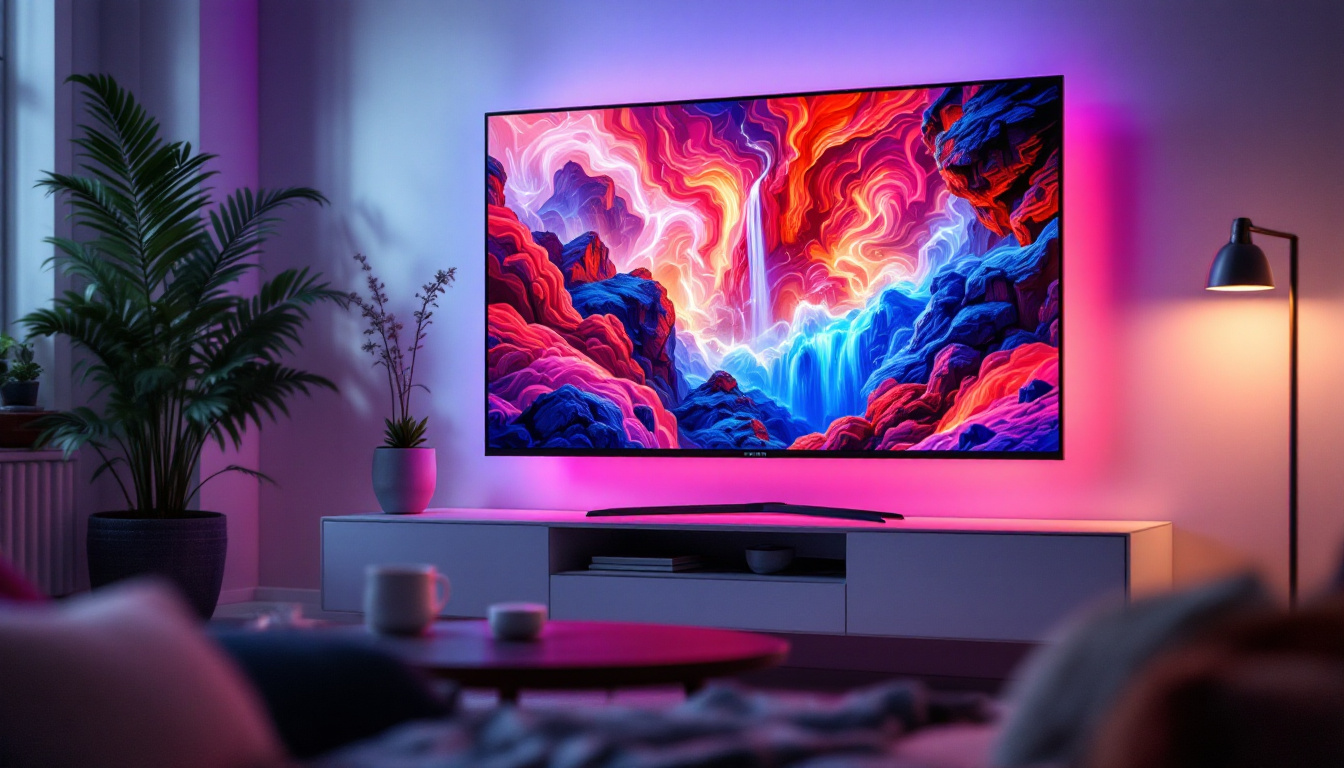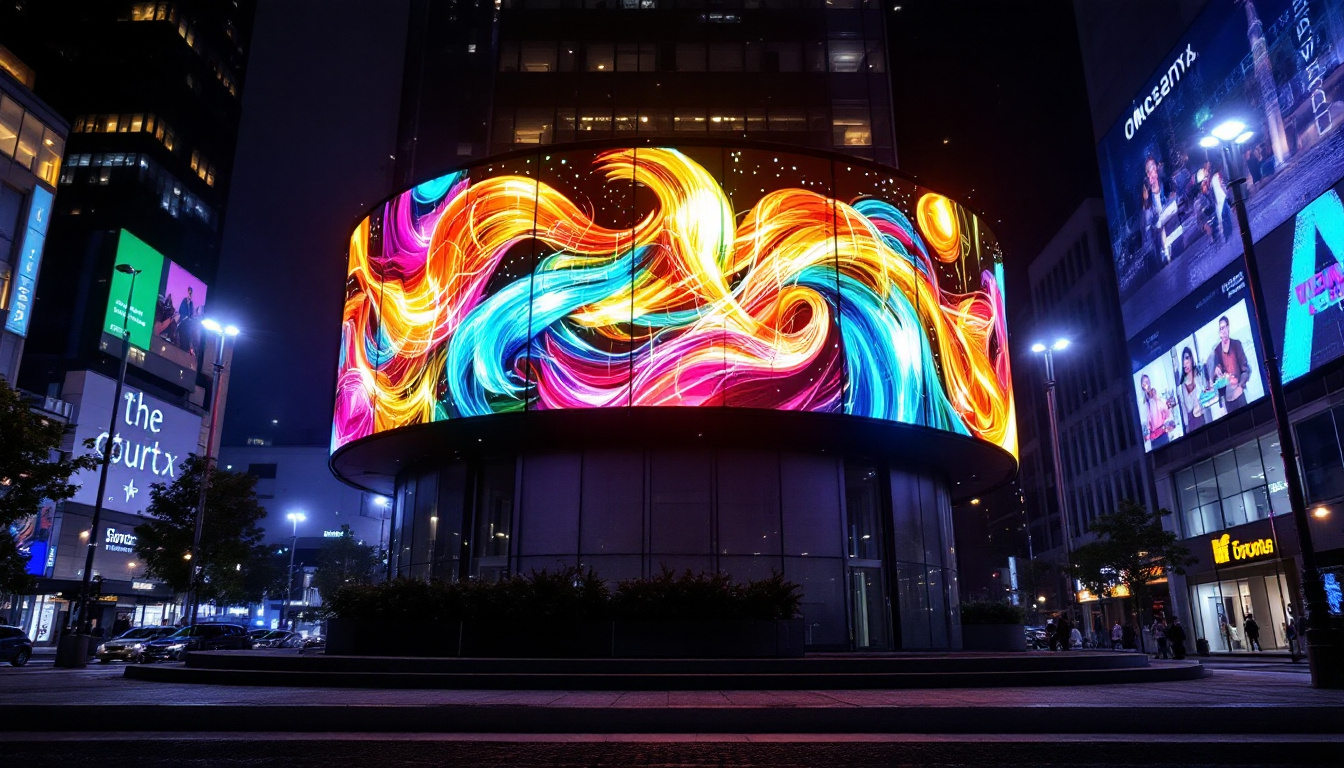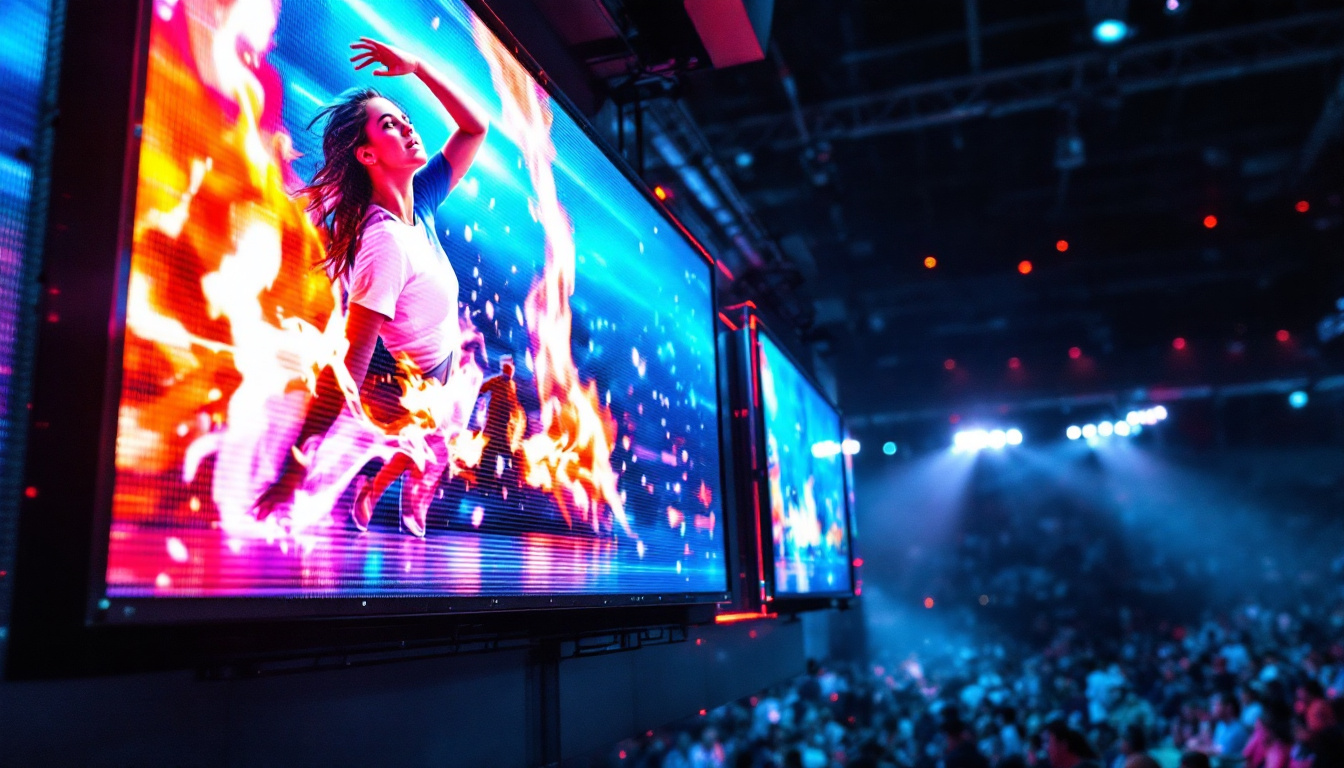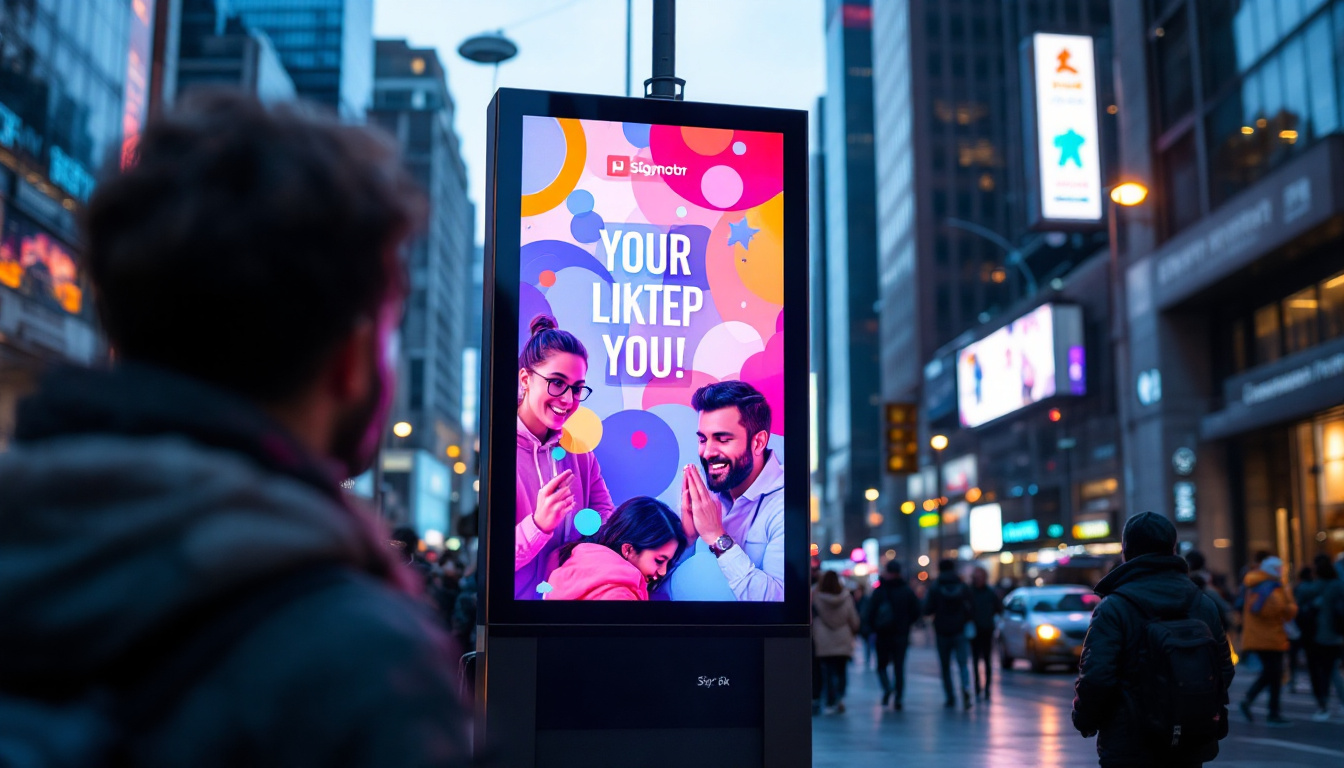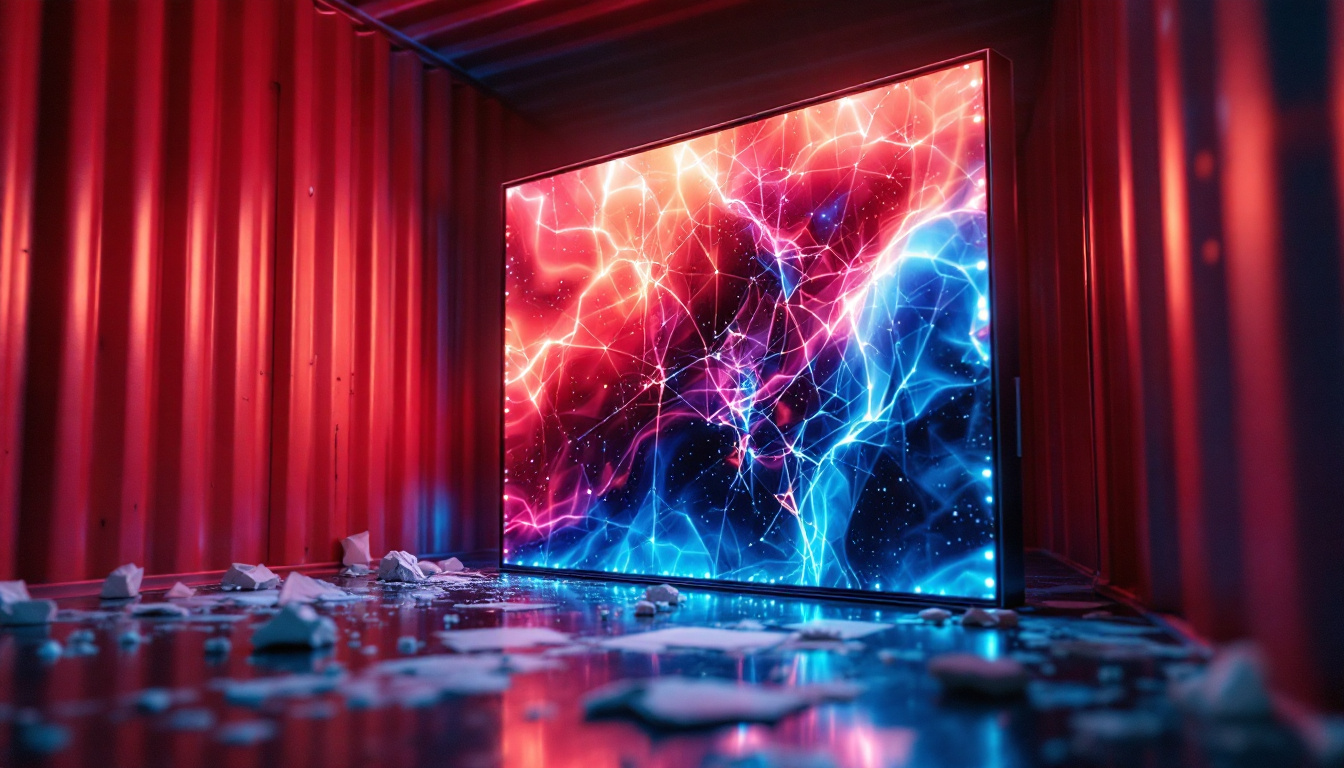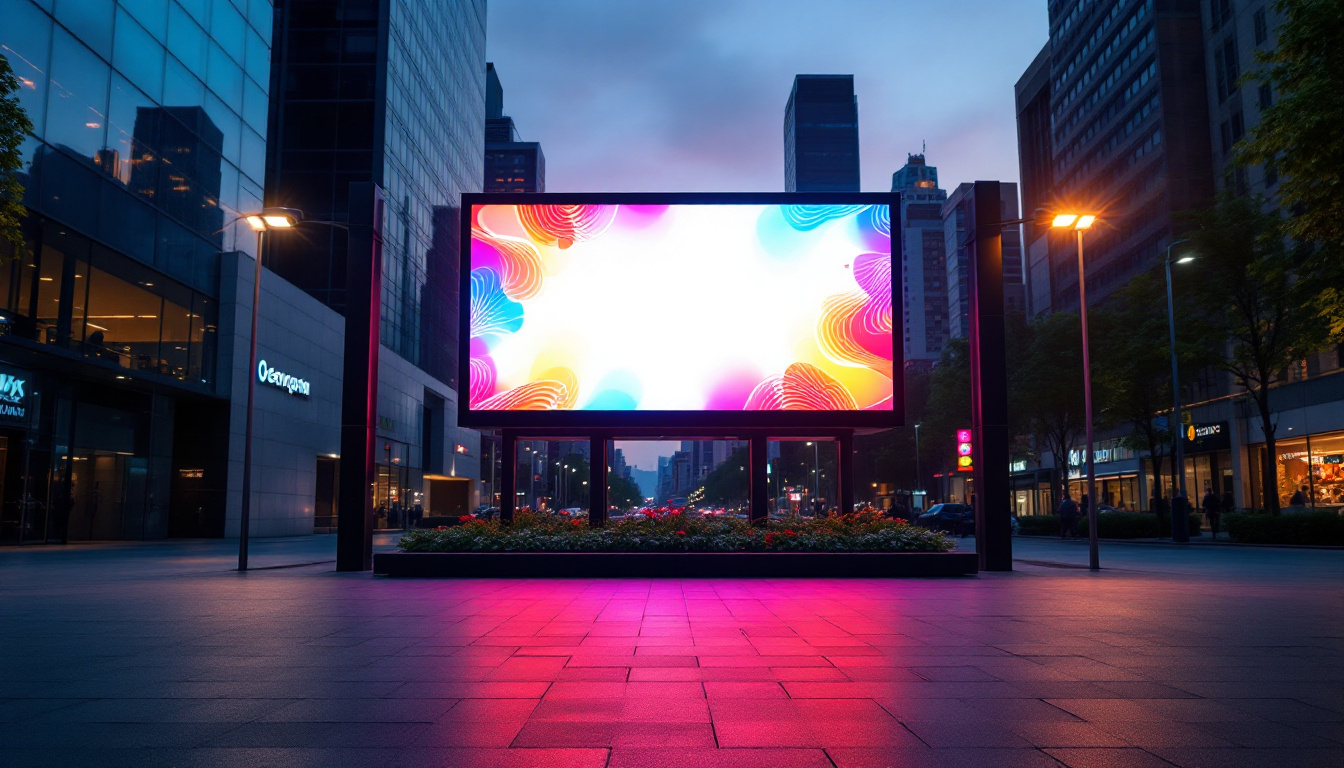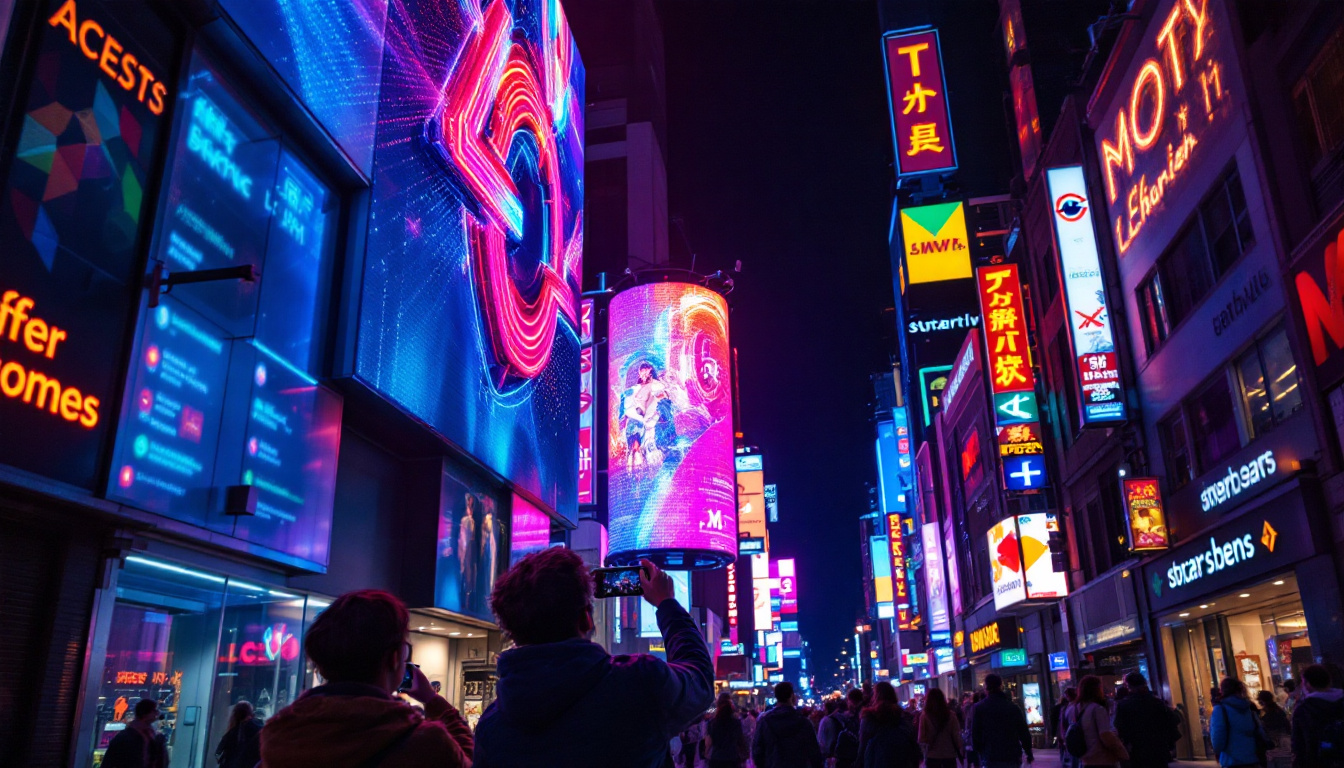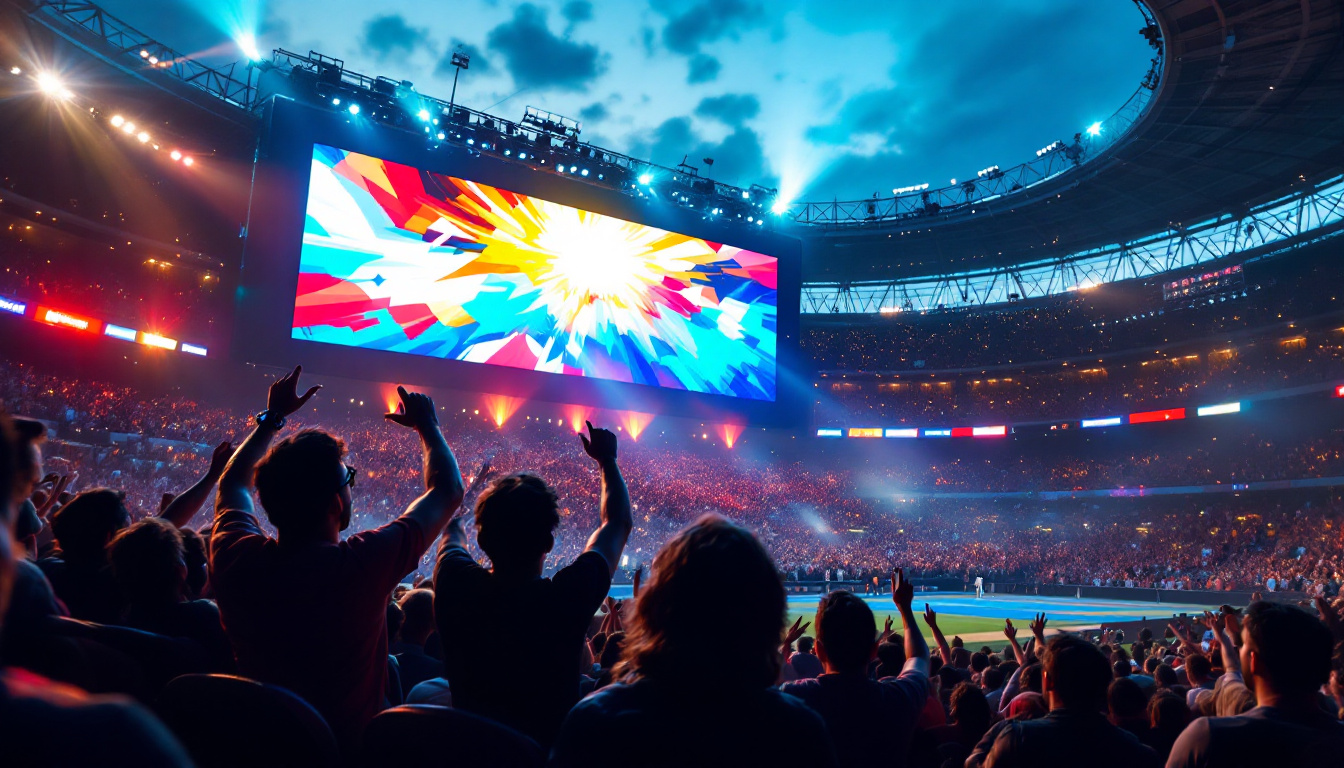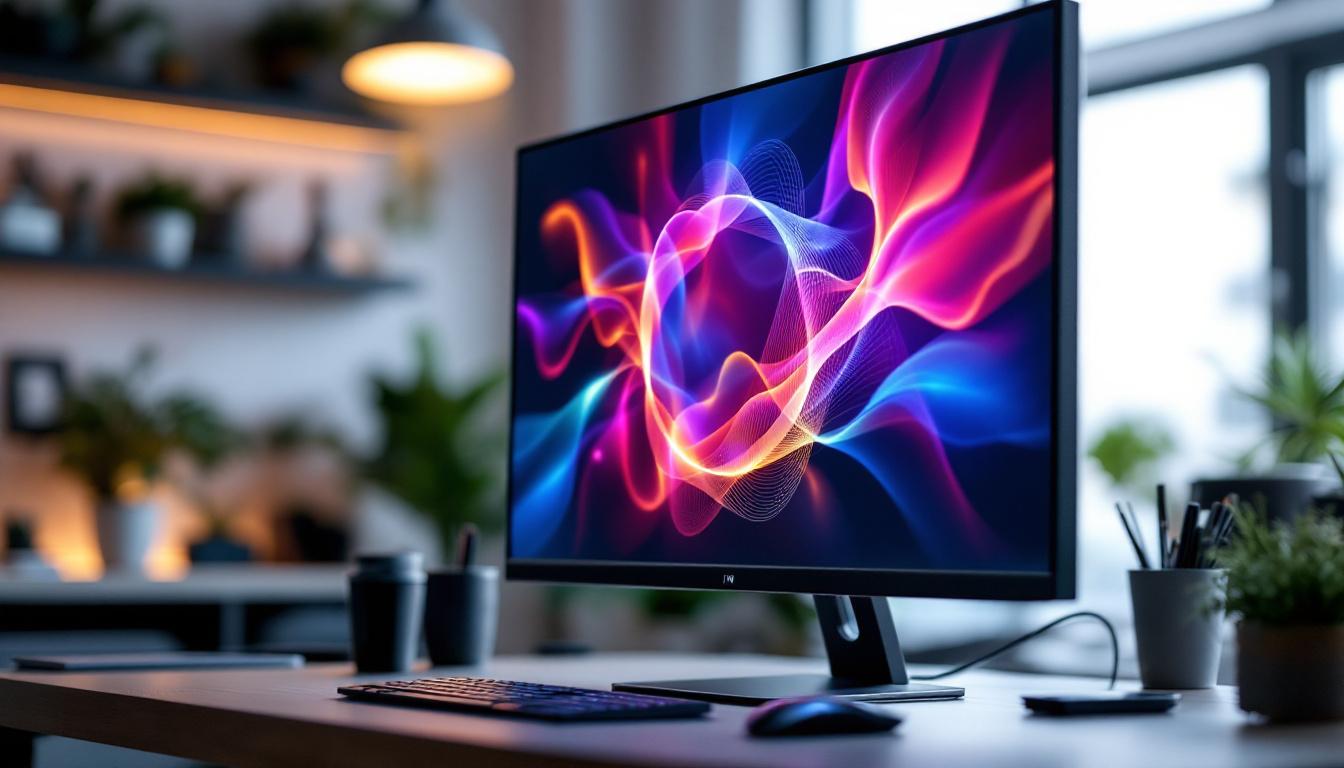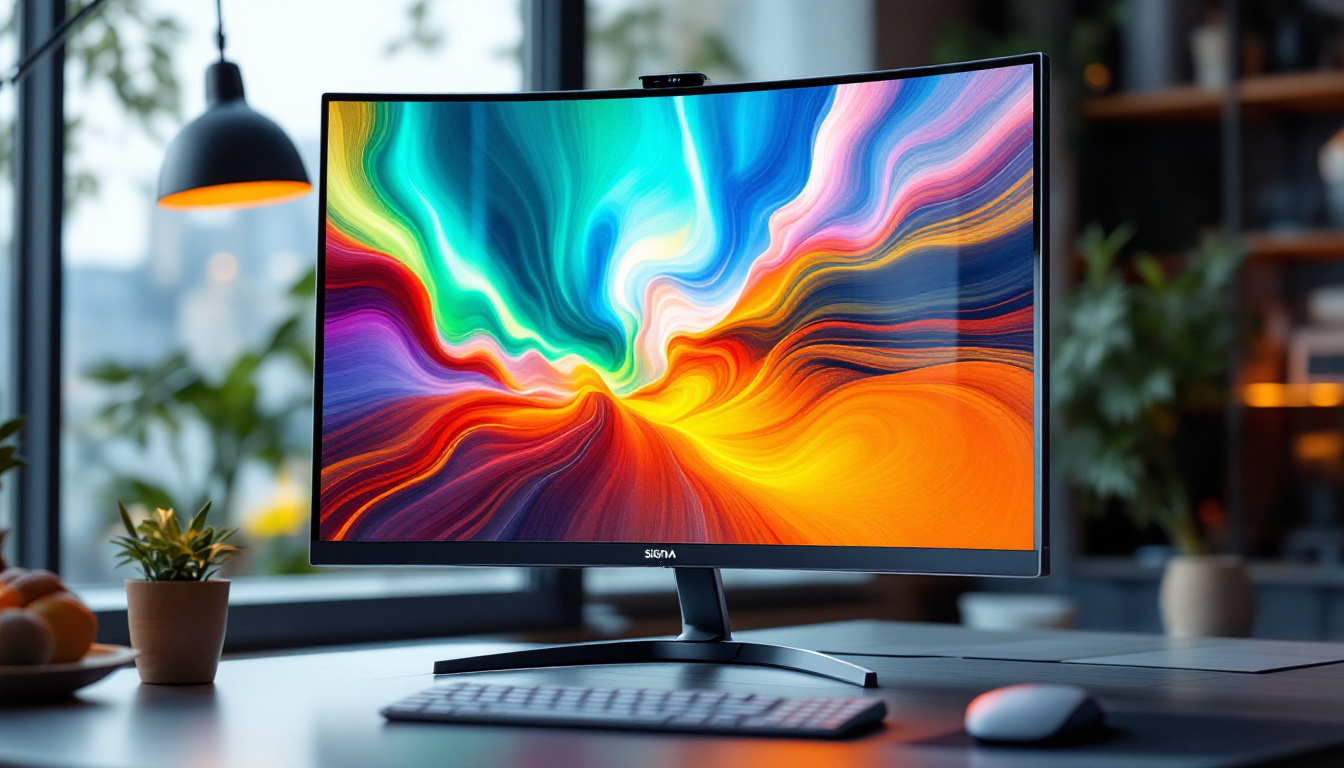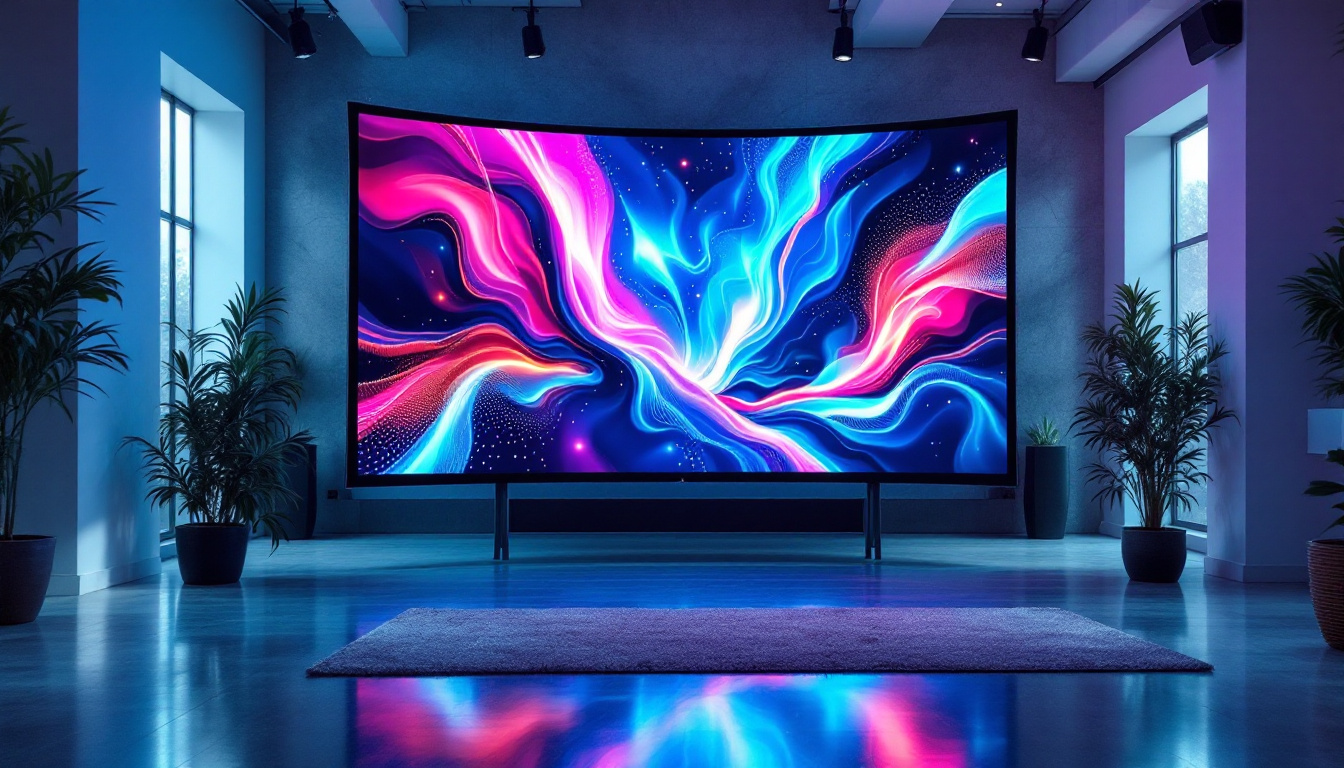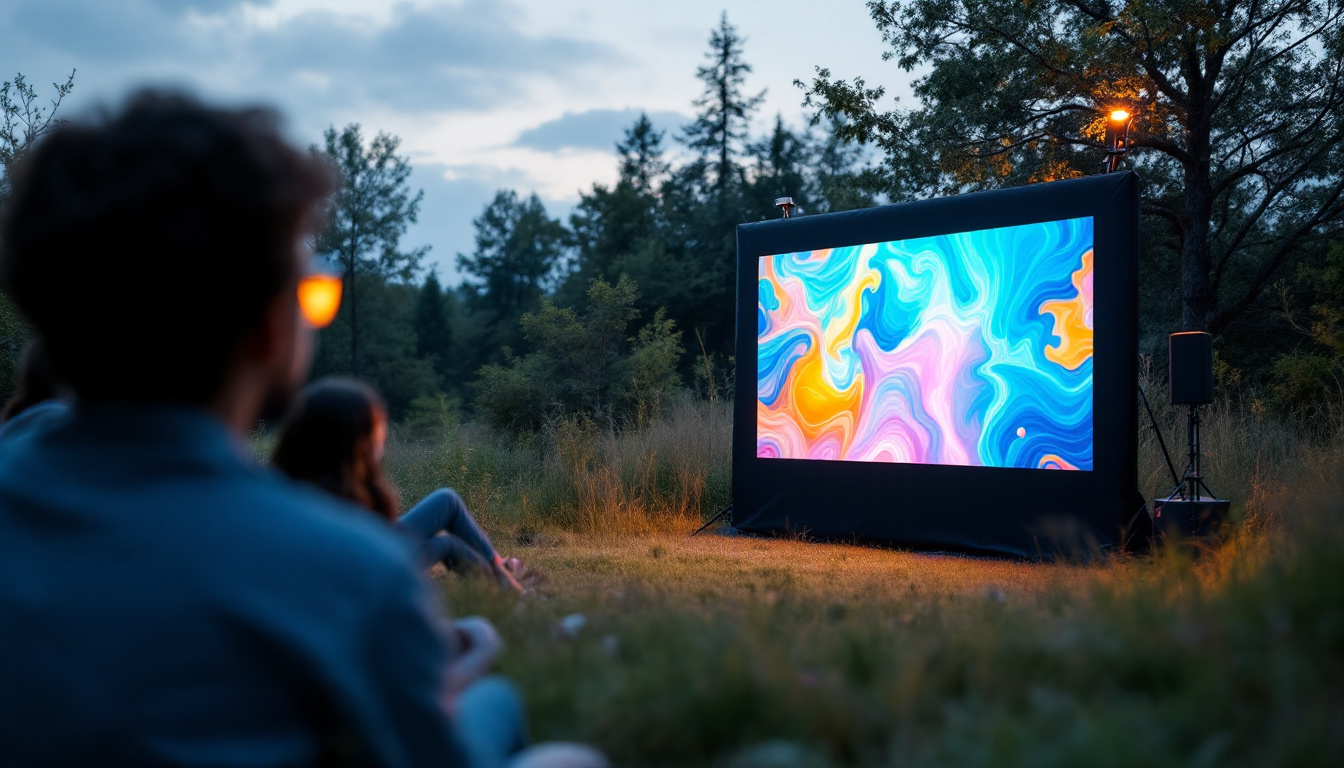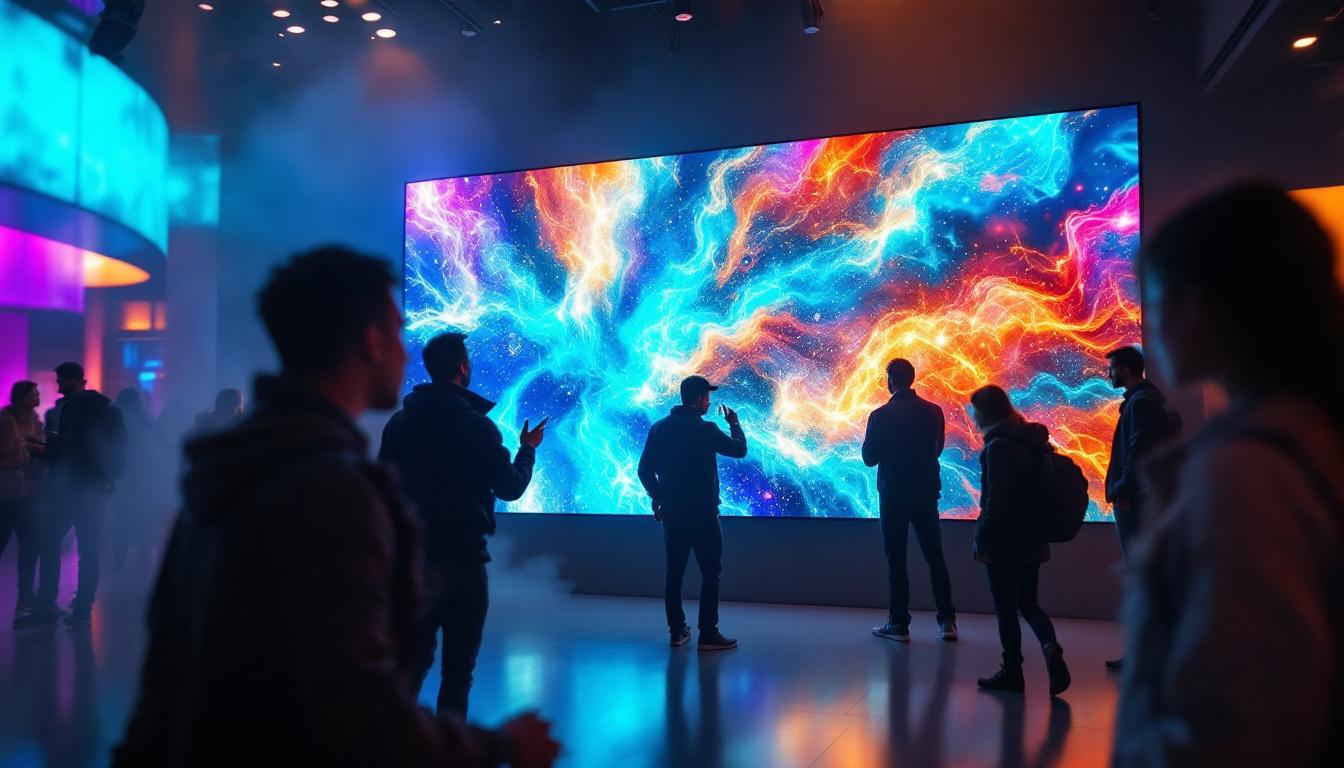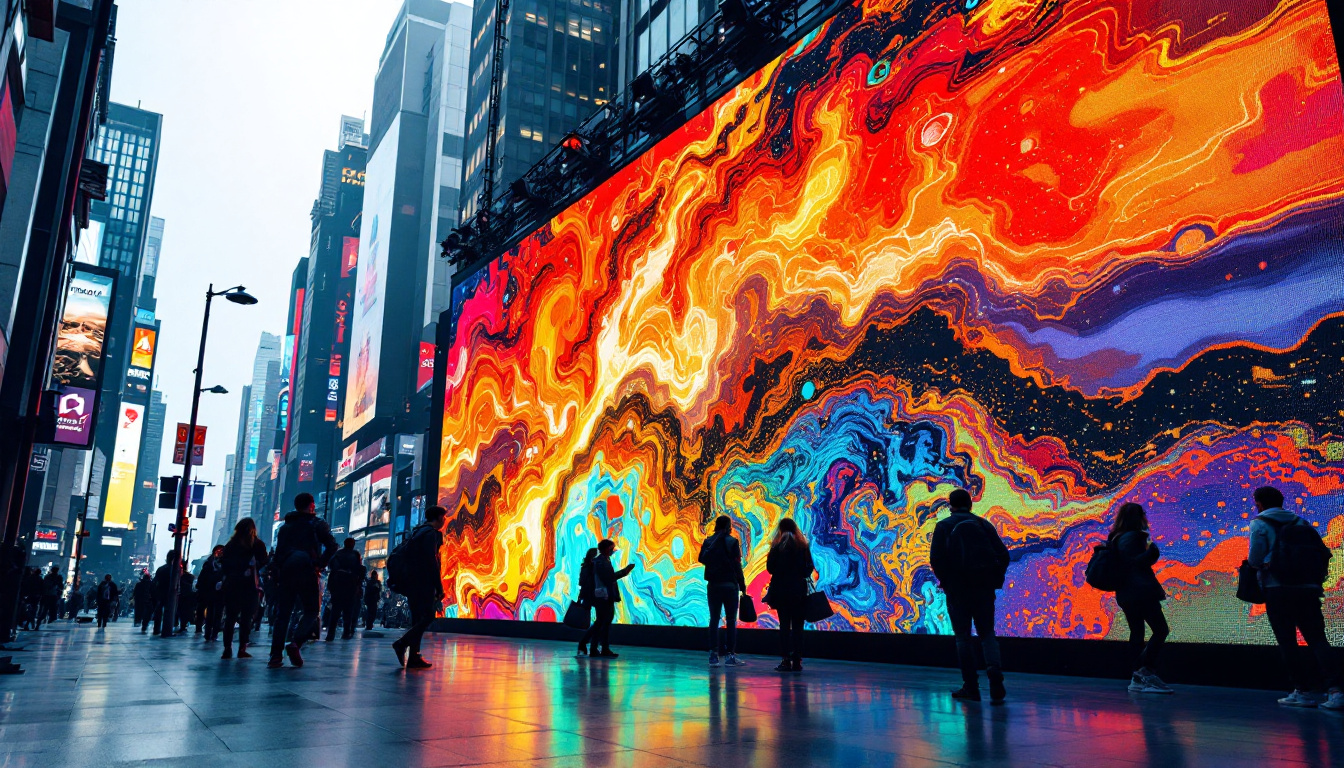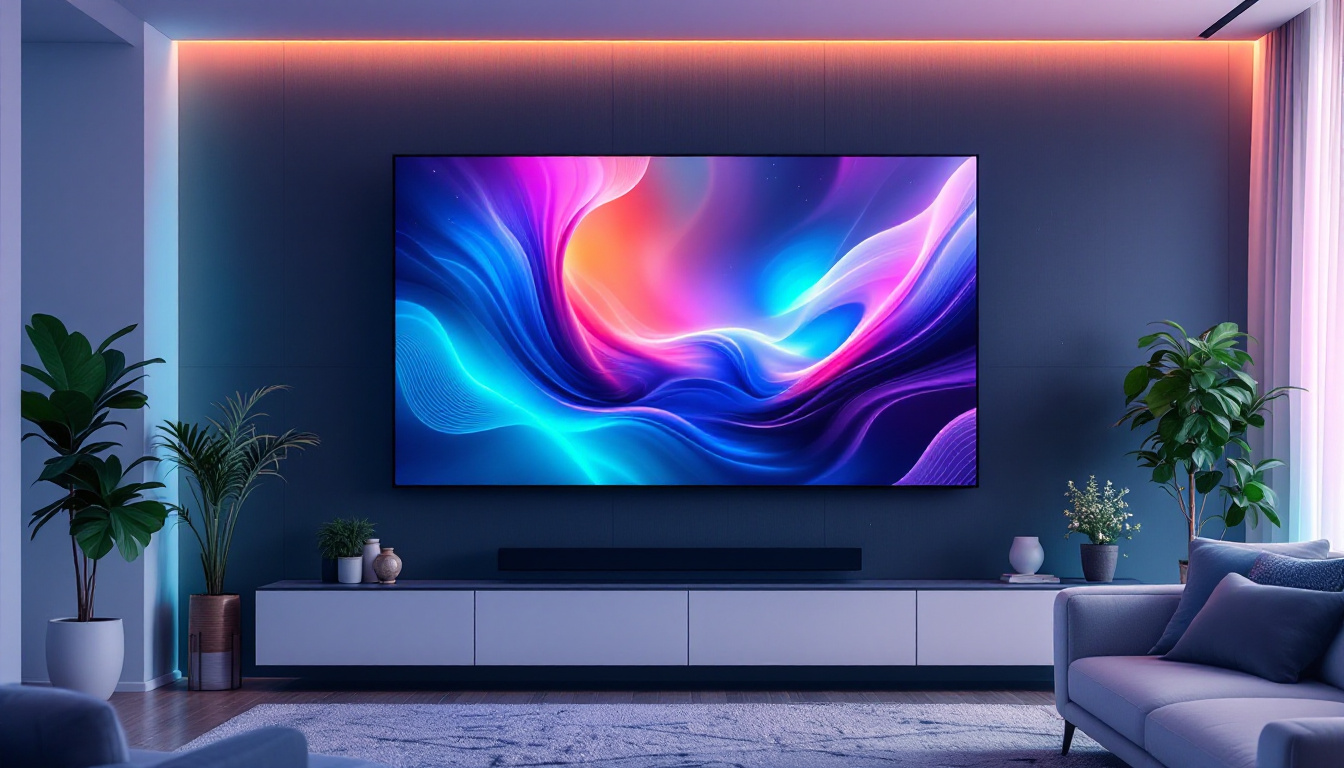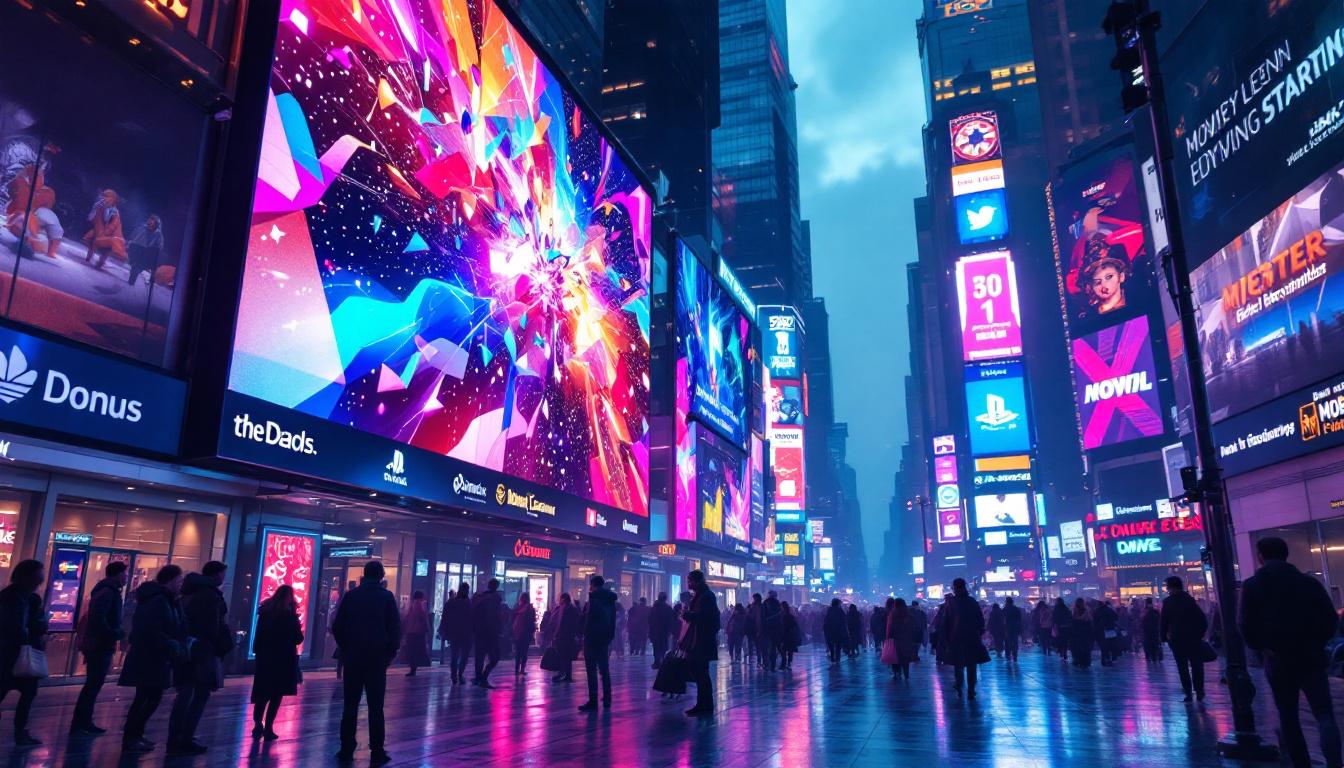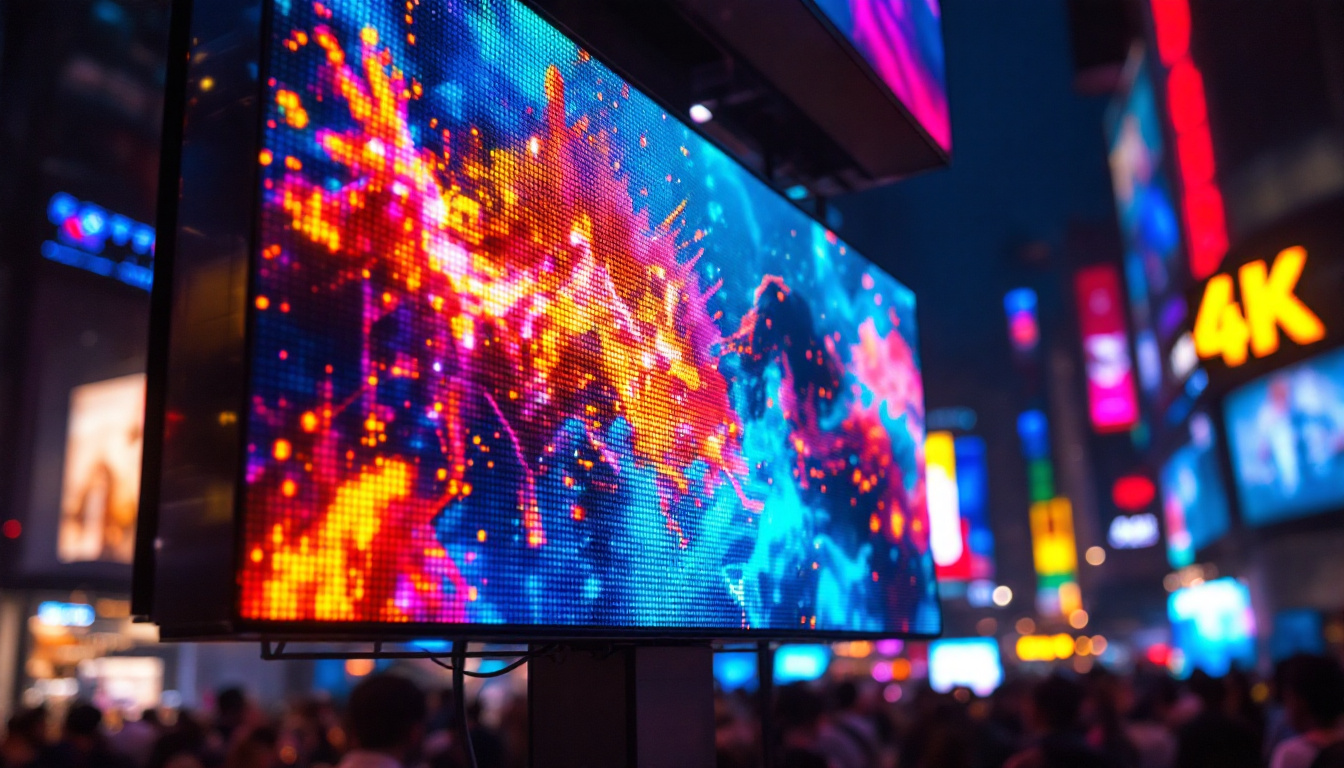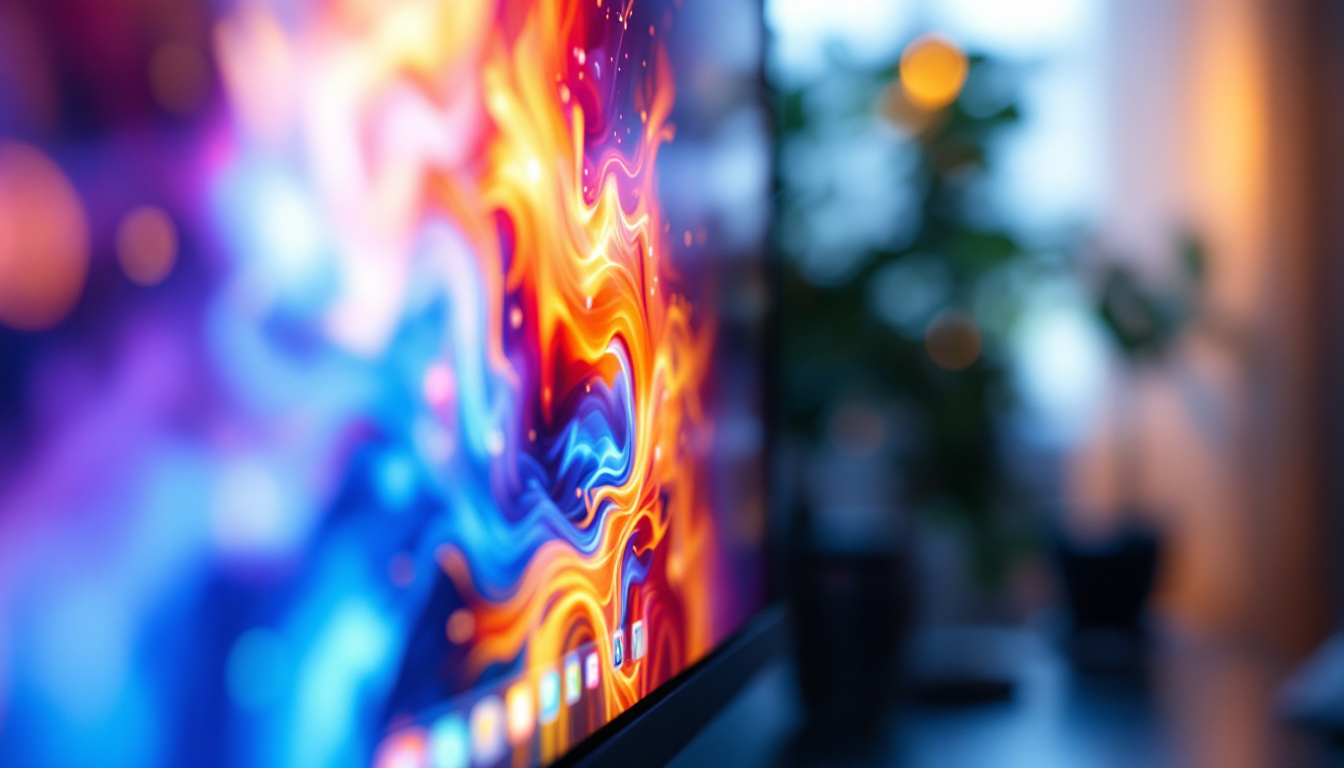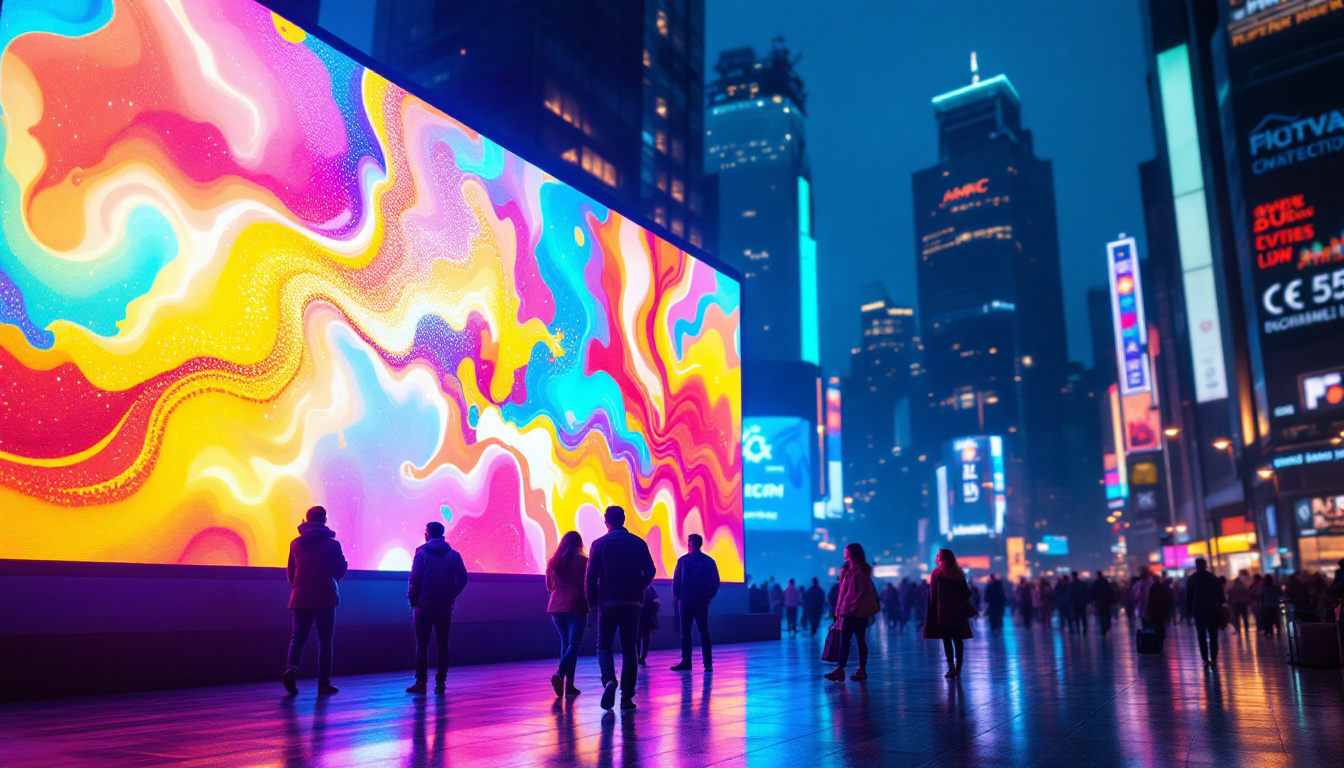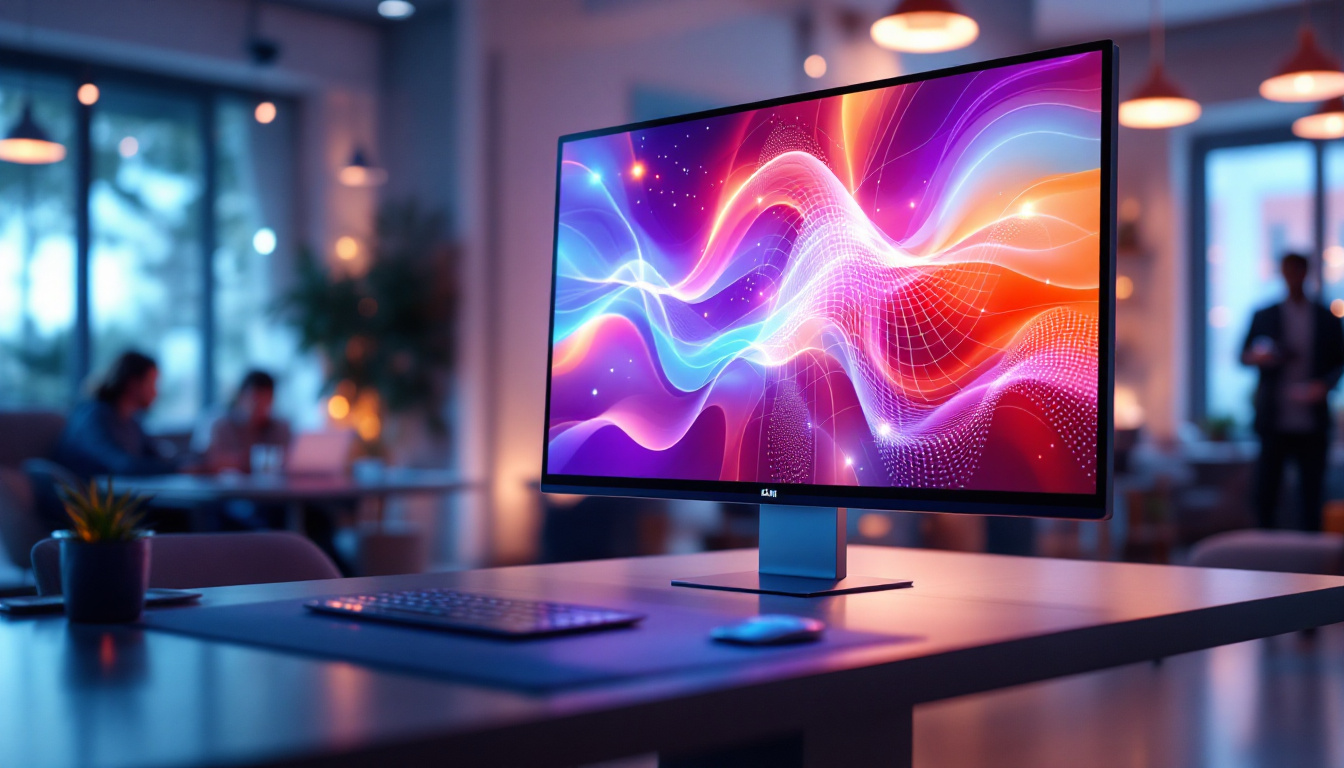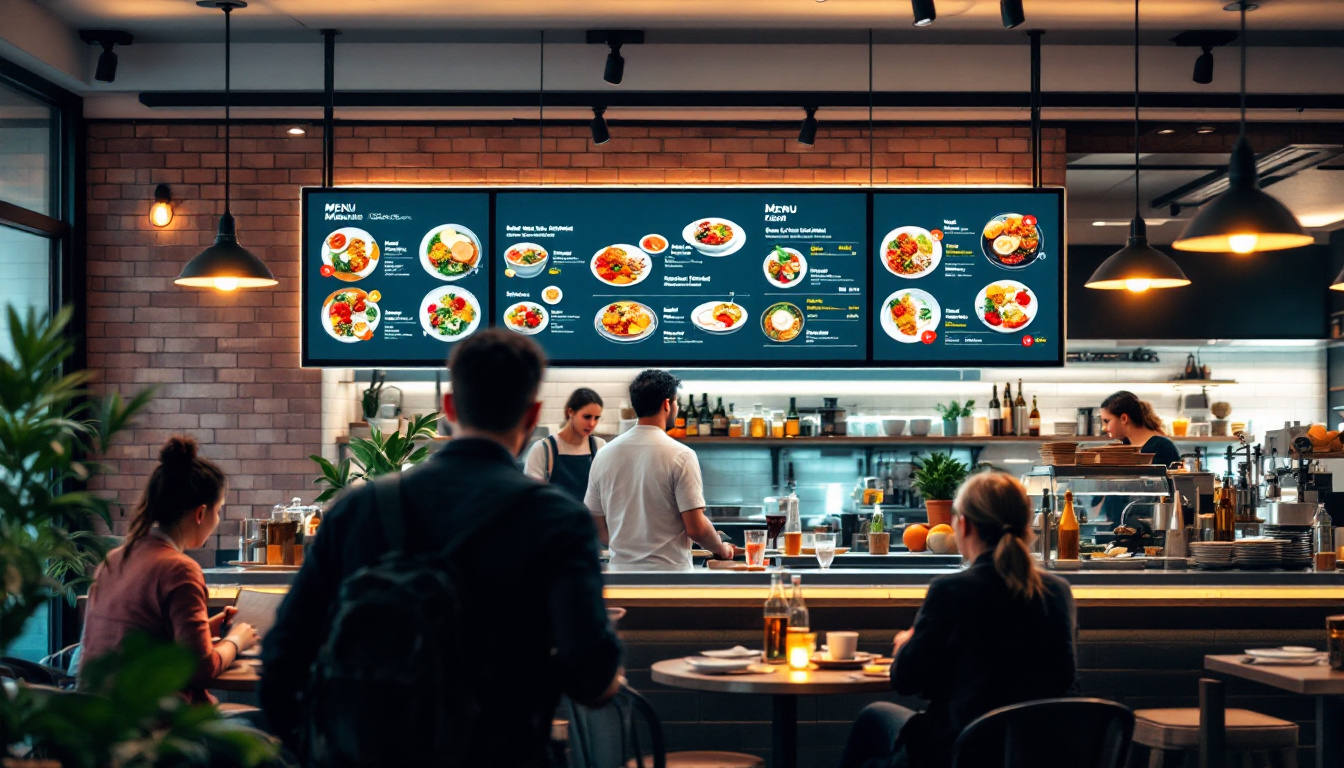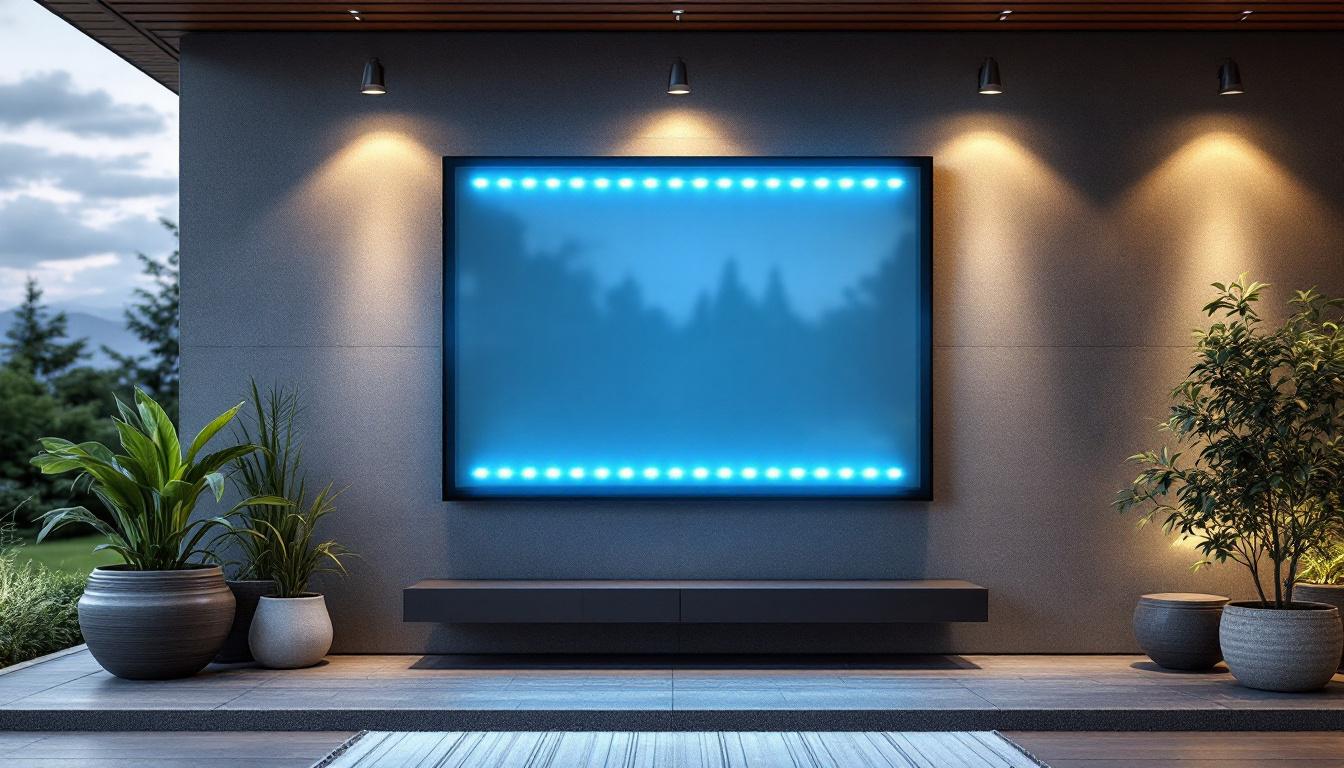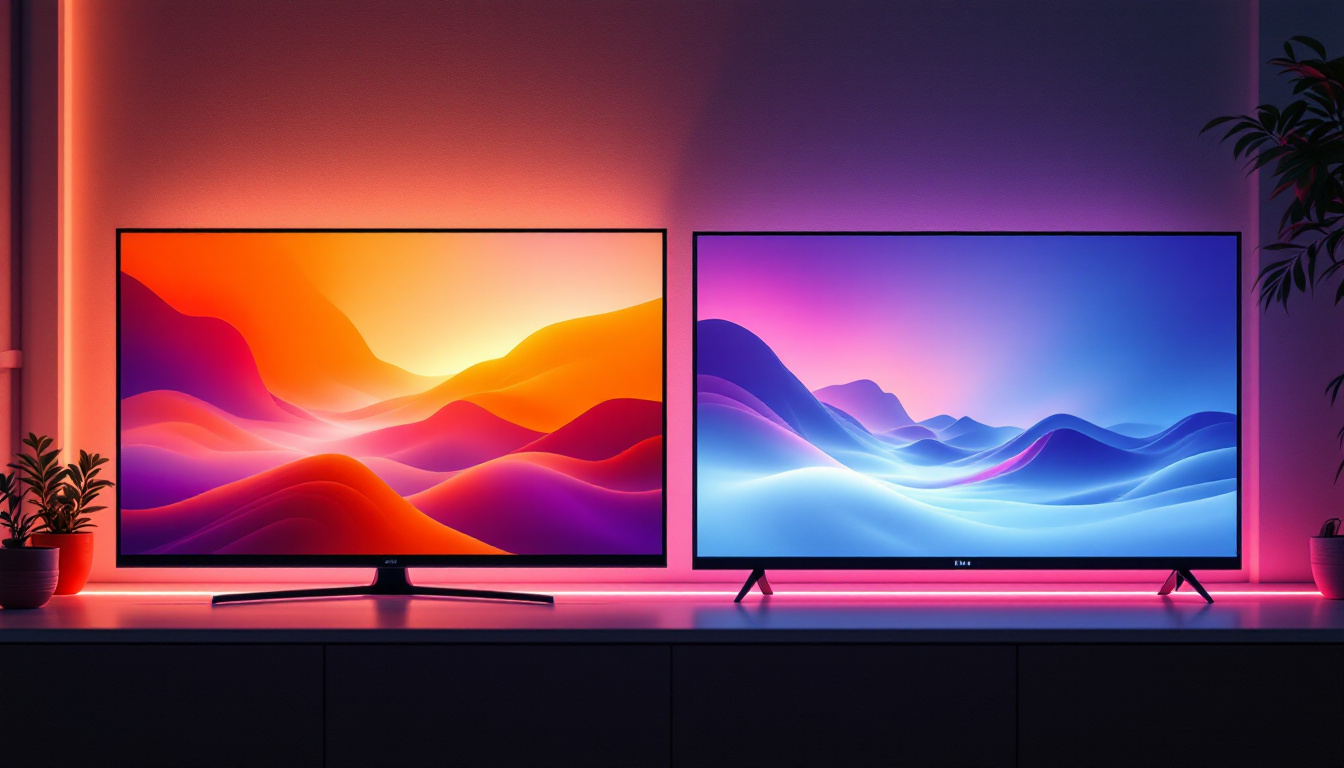Flexible TV Display: LED Display Explained
The evolution of television technology has seen remarkable advancements over the years, with LED displays leading the charge in terms of quality and versatility. Among the latest innovations in this domain is the flexible TV display, a cutting-edge technology that promises to redefine how viewers experience their favorite content. This article delves into the intricacies of flexible LED displays, exploring their benefits, applications, and the future of television technology.
Understanding LED Technology
Light Emitting Diode (LED) technology has transformed the landscape of visual displays. Unlike traditional LCD screens that rely on backlighting, LED displays utilize tiny diodes that emit light when an electric current passes through them. This fundamental difference results in enhanced brightness, improved color accuracy, and greater energy efficiency. The shift to LED technology has not only improved the quality of visual media but has also influenced the design and functionality of various devices, from smartphones to large-scale billboards.
How LED Displays Work
At the core of an LED display are thousands of individual diodes, which can be configured in various ways to create a full-color image. These diodes can be divided into two main categories: RGB (Red, Green, Blue) and monochrome. RGB diodes combine to produce a wide spectrum of colors, while monochrome displays are limited to a single color. The precise arrangement and control of these diodes allow for intricate patterns and animations, making LED displays particularly popular for advertising and artistic installations.
The flexibility of LED technology allows for various display configurations, including curved and ultra-thin designs. This adaptability has paved the way for innovative applications in both consumer electronics and commercial displays. For instance, LED technology is now widely used in digital signage, where vibrant visuals can capture attention in bustling environments. Additionally, advancements in flexible LED panels have led to creative uses in architecture and interior design, allowing for dynamic and interactive spaces.
Advantages of LED Displays
LED displays offer a plethora of advantages over traditional display technologies. Their superior brightness and contrast ratios make them ideal for viewing in various lighting conditions, whether in a dimly lit room or a sunlit environment. Additionally, LED displays consume less power, which translates to lower energy bills and a reduced carbon footprint. This energy efficiency is particularly beneficial in large installations, such as stadiums and concert venues, where the cumulative savings can be substantial.
Another significant benefit is their longevity. LED displays have a longer lifespan compared to other display technologies, making them a cost-effective choice in the long run. The durability of LED components also means they are less prone to damage, further enhancing their appeal. Furthermore, the low maintenance requirements of LED displays contribute to their popularity in both residential and commercial settings. With fewer replacements needed over time, users can enjoy high-quality visuals without the frequent hassle of upgrading or repairing their display systems, making LED technology a smart investment for the future.
The Emergence of Flexible Displays
flexible displays represent the next frontier in display technology. By utilizing advanced materials and innovative manufacturing processes, manufacturers have developed screens that can bend, roll, and even fold without compromising image quality. This flexibility opens up a world of possibilities for both personal and commercial use. With the rapid advancement of technology, these displays are not just a concept of the future; they are becoming a reality that is reshaping how we interact with digital content.
What Makes Displays Flexible?
Flexible displays are typically made using organic light-emitting diodes (OLED) or flexible LED technology. These materials allow the screen to maintain its functionality while being manipulated into various shapes. The key to their flexibility lies in the substrates used during production, which can be made from materials like plastic or metal foil. These substrates are engineered to be lightweight yet robust, ensuring that they can endure the rigors of daily use without succumbing to wear and tear.
Moreover, the manufacturing process involves techniques that ensure the display can withstand repeated bending and stretching. This durability is essential for applications where the display may be frequently adjusted or repositioned. Innovations in nano-coating and protective layers further enhance the resilience of these screens, making them resistant to scratches and other forms of damage. As a result, flexible displays are not only versatile but also built to last, making them a compelling choice for a wide range of applications.
Applications of Flexible Displays
The potential applications for flexible displays are vast and varied. In the consumer market, flexible TVs can be designed to fit seamlessly into modern living spaces, allowing for innovative setups that traditional screens cannot accommodate. Imagine a TV that can be rolled up and stored away when not in use, or one that can be curved to fit the contours of a room. This adaptability not only enhances the aesthetic appeal of living spaces but also maximizes functionality, catering to the diverse needs of consumers.
Beyond residential use, flexible displays are making waves in commercial settings. Retailers can utilize flexible screens for eye-catching advertisements that can be shaped to fit unique display cases. Additionally, flexible displays can be integrated into wearable technology, providing users with a lightweight and adaptable viewing experience. This integration extends to smart clothing, where displays can be woven into fabrics, allowing for dynamic designs that change based on user preference or environmental conditions. Furthermore, in the automotive industry, flexible displays are being explored for use in dashboards and infotainment systems, enabling a more streamlined and customizable interface for drivers and passengers alike.
The Benefits of Flexible TV Displays
Flexible TV displays offer a range of benefits that enhance the viewing experience and provide practical solutions for modern living. These advantages extend beyond mere aesthetics, impacting functionality and usability.
Space-Saving Design
One of the most significant benefits of flexible TV displays is their space-saving design. Traditional flat-screen TVs can be bulky and take up considerable wall space. In contrast, flexible displays can be designed to fit snugly into various environments, whether mounted on a wall or integrated into furniture.
This adaptability is particularly advantageous for smaller living spaces, where maximizing square footage is crucial. A flexible TV can be rolled up or hidden away when not in use, allowing for a more open and versatile living area.
Enhanced Viewing Experience
Flexible displays also contribute to an enhanced viewing experience. The ability to curve or bend the screen can create a more immersive environment, drawing viewers into the action on screen. This is particularly beneficial for cinematic experiences, where a curved display can provide a wider field of view.
Moreover, flexible displays can be adjusted to suit individual preferences, allowing users to customize their viewing angles. This level of personalization is a significant step forward in creating a tailored entertainment experience.
Challenges Facing Flexible TV Displays
While the prospects of flexible TV displays are promising, several challenges remain in their development and widespread adoption. Addressing these hurdles is crucial for the technology to reach its full potential.
Cost of Production
One of the primary challenges facing flexible displays is the cost of production. The materials and processes required to manufacture flexible screens are often more expensive than those used for traditional displays. This increased cost can translate to higher retail prices, potentially limiting consumer adoption.
As technology advances and production methods become more efficient, it is expected that prices will decrease over time. However, for the moment, the cost remains a significant barrier to widespread use.
Durability Concerns
While flexible displays are designed to withstand bending and manipulation, concerns about their long-term durability persist. The materials used in flexible screens must be robust enough to endure daily use without degrading or losing image quality.
Manufacturers are continually working to improve the durability of flexible displays, but it remains an area of focus as consumers seek products that can withstand the rigors of everyday life.
The Future of Flexible TV Displays
The future of flexible TV displays is bright, with ongoing research and development paving the way for even more innovative applications. As technology continues to evolve, consumers can expect to see a wider range of flexible display options that cater to diverse needs and preferences.
Integration with Smart Home Technology
As smart home technology becomes increasingly prevalent, the integration of flexible displays into these systems is likely to become more common. Imagine a flexible TV that not only serves as a screen for entertainment but also functions as a smart home hub, controlling lighting, security, and other connected devices.
This seamless integration will enhance the functionality of flexible displays, making them an essential component of modern living spaces.
Advancements in Display Quality
As manufacturers continue to refine flexible display technology, improvements in image quality are anticipated. Enhanced resolution, better color accuracy, and improved contrast ratios will elevate the viewing experience, making flexible TVs a more appealing option for consumers.
These advancements will not only enhance the aesthetic appeal of flexible displays but also ensure that they meet the high standards set by traditional display technologies.
Conclusion
Flexible TV displays represent a significant leap forward in television technology, offering a unique blend of versatility, space-saving design, and enhanced viewing experiences. While challenges remain in terms of production costs and durability, the potential applications and benefits of flexible displays are vast.
As the technology continues to evolve, consumers can look forward to a future where flexible displays become a staple in homes and businesses alike. With ongoing advancements in display quality and integration with smart home systems, the flexible TV display is poised to redefine how viewers engage with their favorite content.
In the ever-changing landscape of technology, flexible LED displays stand out as a beacon of innovation, promising to transform the way we experience visual media for years to come.
Discover the Future of Visual Experience with LumenMatrix
Ready to embrace the future of television and visual display technology? LumenMatrix is at the forefront of this innovation, offering a wide array of LED display solutions that cater to your every need. From captivating Indoor and Outdoor LED Wall Displays to dynamic Vehicle and Sports LED Displays, our products are designed to revolutionize your visual communication. Experience the difference with our Custom LED Displays, All-in-One solutions, and groundbreaking LED Transparent Displays. Don’t miss out on the opportunity to enhance your brand visibility and audience engagement. Check out LumenMatrix LED Display Solutions today and step into a world where clarity and impact converge.

